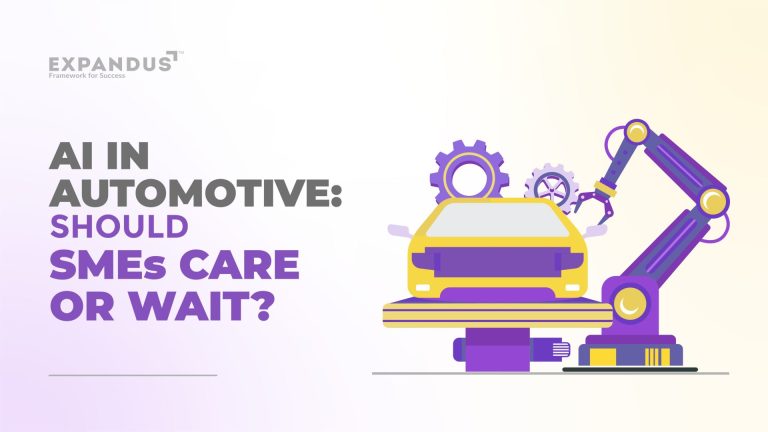Navigating the Challenges of Gathering Software Requirements
Software development is a multifaceted journey. From the initial conceptualization and design to the development and rigorous testing, it involves various stages. In these stages, an often underestimated but crucial step is the software requirements gathering. As a software entrepreneur, you likely have experience in gathering and translating requirements into precise instructions for your development team. However, it’s crucial to recognize that this procedure comes with its unique set of challenges.
This blog post explores effective practices and strategies that enable development teams to confidently manage the intricacies of software requirements gathering by systematically addressing potential challenges.
What is software development requirements gathering?
Software development requirements gathering is the initial and fundamental step in the software development process. It serves as the foundation upon which the entire development process is built. The project team works to collect and document the essential information and criteria needed for a successful software project.
This involves communication with stakeholders, clients, users, and relevant parties. It is done to understand their needs, expectations, and the specifics of the software they want to create. The primary goal is to define the scope of the project, including its features, functionalities, and constraints, which will serve as a blueprint for the entire development process.
For example, let’s consider a scenario in which a company decides to develop a new e-commerce website. The software development requirements gathering process would involve discussions with key stakeholders, such as the company’s management, marketing team, and potential users.
During these discussions, the project team would aim to understand what the website should accomplish. They might gather information about features like product catalog, user registration, shopping cart functionality, payment processing, and user reviews. They would also consider non-functional requirements like website performance, security, and scalability.
With a thorough software requirement gathering, your team can create a clear and detailed set of instructions for the development team to follow. This ensures that the end product aligns with the stakeholders’ expectations and the project’s objectives.
Read Also: How to Get Clients for Software Companies?
Functional vs. Non-Functional Requirements
In the context of software requirements gathering, it’s essential to distinguish between functional and non-functional requirements.
Functional requirements define what the software should do and describe its features, functionalities, and interactions. These requirements are specific and often include details like user interfaces, data manipulation, and system behavior. They answer the question of “What should the software accomplish?”
On the other hand, non-functional requirements focus on how the software should perform. These requirements encompass aspects like performance, security, scalability, and usability. They provide criteria for evaluating the overall quality and behavior of the software. Non-functional requirements answer the question of “How well should the software perform?”
Both types of requirements are critical for a comprehensive understanding of the project’s scope and the successful execution of the software development process. Balancing functional and non-functional requirements is vital to meet stakeholders’ expectations and deliver a high-quality software product.
Why is Software Requirements Gathering Necessary?
Software development requirement gathering is a pivotal phase in the software development process that plays a significant role in ensuring the success of a project. It serves multiple crucial purposes, including:
- Process Improvement:
Requirements gathering techniques facilitate process improvement by promoting clear communication and collaboration among stakeholders. It provides a structured approach to identifying and documenting project needs and expectations. Through this process, ambiguities are reduced, and a shared understanding of the project’s objectives is established. This, in turn, leads to better project management, streamlined workflows, and minimized risks.
- Categorize Requirements:
One of the key functions of requirements gathering is to categorize the different types of requirements, namely functional and non-functional requirements. Functional requirements specify what the software should do, while non-functional requirements define how it should perform. This categorization is essential for prioritizing and addressing each requirement effectively. It ensures that development efforts are focused on delivering the desired features and achieving the desired performance and quality levels.
- Project Estimation:
Accurate project estimation is critical for managing resources, budgets, and timelines effectively. Requirements gathering helps in defining the scope and complexity of the project. With a well-documented set of requirements, project managers can estimate the time, effort, and resources required more precisely. This results in more realistic project schedules and budgets. Furthermore, it enables better risk assessment, allowing teams to address potential challenges proactively.
Thus, requirements gathering is a fundamental step in software development because it enhances project management, provides clarity, and enables precise project estimation. It is an essential process for aligning the development team’s efforts with stakeholders’ expectations and delivering a successful software product that meets user needs and business objectives.
Read Also: The Software Sales Psychology: Understanding Buyer’s Behavior
Software Requirement Gathering Process: Key Steps
To successfully gather software requirements development, it’s imperative to follow a structured process. Here are the essential steps that ensure the effective collection and documentation of requirements while minimizing ambiguity and maximizing project success:
Understand the Pain Behind the Requirement: Before diving into specific requirements, take the time to understand the underlying pain points and business needs. This involves engaging with stakeholders to discover the ‘why’ behind each requirement. For example, if a requirement involves adding real-time chat functionality to a website, the pain point might be a need for improved customer support and enhanced user engagement.
Appoint the Proper Team: Assemble a team with the right mix of skills and expertise. This team should include stakeholders, business analysts, domain experts, and development professionals. Each team member should bring a unique perspective to the requirements gathering process, ensuring coehensive coverage of all aspects.
Eliminate Language Ambiguity: Ambiguity in language can lead to misunderstandings and misinterpretations. Ensure that everyone involved in the process uses clear, unambiguous language when discussing requirements. It’s beneficial to define and standardize terms, use diagrams or flowcharts, and provide examples to clarify concepts.
Identify Corner Cases: While focusing on the main requirements is crucial, don’t overlook the ‘corner cases.’ These are exceptional scenarios or edge cases that might not occur frequently but are important to consider. For instance, when developing a banking application, a corner case could involve handling transactions with unusual currency conversions.
Write User Stories: User stories are a valuable tool for describing requirements from the user’s perspective. They typically follow the ‘As a [user], I want to [do something] so that [I achieve a goal]’ format. User stories help frame requirements in a user-centric way, making it easier to understand and prioritize them. For instance, ‘As a customer, I want to be able to reset my password so that I can regain access to my account’ is a user story for a password reset feature.
List Assumptions: It’s important to document any assumptions made during the requirements gathering process. Assumptions can involve expectations about user behavior, data availability, or third-party integrations. These should be listed and shared with the team to ensure everyone is on the same page. For example, you might assume that users will have a stable internet connection when using your application.
Create a Definition of ‘Done’: Defining what ‘done’ means for each requirement is crucial. This establishes clear criteria for when a requirement is considered complete and meets the stakeholders’ expectations. The definition of ‘done’ might include criteria such as successful testing, user acceptance, and documentation. For instance, for a requirement related to an e-commerce checkout process, the ‘done’ criteria could include successful order placement, payment processing, and email confirmation sent to the user.
By following these steps, software requirements gathering becomes a systematic and thorough process that results in well-documented, clear, and comprehensive requirements. This, in turn, sets the stage for successful software development projects with minimal misunderstandings and maximum alignment with stakeholder needs.
Possible Challenges in Software Requirement Gathering
Gathering software requirements is a critical phase of the software development process, but it is not without its share of challenges. Addressing these challenges effectively is essential to ensure that the resulting software product meets the needs of stakeholders and is delivered on time and within budget. Here are some possible challenges that can be encountered during the requirement gathering process:
- Ambiguous or Unclear Requirements:
One of the most common challenges in requirement gathering is the presence of ambiguous or unclear requirements. Ambiguities can arise from imprecise language, a lack of detail, or inconsistent terminology. For example, a requirement that states “The system should be fast” is ambiguous because it doesn’t specify what ‘fast’ means regarding performance metrics.
- Miscommunication:
Miscommunication between stakeholders, team members, and project managers can lead to misunderstandings and incorrect assumptions. Differences in terminology, cultural backgrounds, or communication styles can contribute to miscommunication. Clear and effective communication is essential to ensure that everyone involved has a shared understanding of the requirements.
- Changing Requirements:
Requirements can change over the course of a project due to evolving business needs, emerging technologies, or shifting priorities. Managing changing requirements can be challenging, as it may require adjustments to the project plan, timeline, and budget. Failure to manage changes effectively can result in project delays and increased costs.
- Conflicting Stakeholder Opinions:
Different stakeholders often have varying opinions and priorities. Conflicting stakeholder opinions can make it challenging to prioritize and define requirements. For example, the marketing team may prioritize user interface enhancements, while the IT department may prioritize security features. Balancing these conflicting opinions can be a delicate task.
- Lack of Documentation:
Inadequate or missing documentation can be a significant challenge. Requirements that are not documented or poorly documented are prone to being forgotten or misunderstood. Documentation provides a reference point for all stakeholders and helps ensure the requirements are transparent, complete, and verifiable.
- Scope Creep:
Scope creep occurs when additional features or requirements are added to the project without proper evaluation and documentation. It can lead to an ever-expanding project scope, resulting in budget overruns and project delays. Managing scope creep requires clear change control processes and a thorough impact assessment.
- Incomplete or Inconsistent Requirements:
Incomplete requirements lack essential details, making it difficult for the development team to understand and implement them accurately. Inconsistent requirements can lead to contradictions and confusion. For example, a requirement may state that the system should be compatible with older browsers and specify cutting-edge web technologies.
To sum up, requirement gathering is a vital step in software development, but it is difficult. Recognizing and addressing these challenges early in the process is crucial for ensuring the success of a software project.
Read Also: Financial Planning for Software Startups
Best Practices to Avoid Requirement Gathering Challenges
To effectively address and mitigate the software requirement gathering challenges, following a set of best practices that streamline the process and ensure the successful collection and documentation of requirements is essential. Here are some best practices to avoid these challenges:
- Break Down into Milestones:
Breaking down the requirement gathering process into smaller, manageable milestones can help in several ways. It allows for incremental progress, ensuring that no critical requirements are overlooked. Each milestone can focus on specific aspects or categories of requirements, making the process more organized and transparent.
For example, For a project to develop a mobile application, you can set milestones for user interface requirements, backend functionality, and security features. By addressing these in separate milestones, you can better allocate resources and manage the complexity of the requirement gathering process.
- Identify Checkpoints & Create a Timeline with Start and end Dates:
Defining clear checkpoints and establishing a timeline with well-defined start and end dates helps keep the requirement gathering process on track. Checkpoints enable you to review and validate the gathered requirements at various stages, ensuring they align with project objectives. A timeline with specific dates creates a sense of urgency and accountability.
Example: In the development of a new e-commerce platform, you can establish a checkpoint after each milestone to review and confirm the requirements gathered. For instance, after finalizing user interface requirements, you can set a checkpoint for the design team to validate and provide feedback, with a deadline for completion.
- Set up Processes:
Establishing well-defined processes for requirement gathering promotes consistency and efficiency. These processes should include roles and responsibilities, clear communication channels, and methods for documenting and tracking requirements. A standardized process helps prevent misunderstandings and ensures that all stakeholders know their roles in the requirement gathering challenges and phases.
Example: In a project to create a healthcare management system, you can implement a process that involves regular meetings with medical professionals, administrators, and IT specialists. Each meeting has a structured agenda and specific documentation requirements to ensure all aspects of the system are covered.
- Document It as and When Required:
Documentation is a key aspect of requirement gathering. Documenting requirements as soon as they are gathered is crucial to avoid misplacement or misinterpretation. Comprehensive documentation provides a reference point for stakeholders and the development team. It should include details like the requirement’s purpose, acceptance criteria, and any relevant context.
Example: In developing a financial software application, as soon as a requirement for real-time stock price updates is discussed and agreed upon with stakeholders, it should be documented. This documentation should include the requirement’s priority, its impact on other features, and any technical considerations associated with implementing it.
By implementing these best practices, you can navigate the requirement gathering steps more effectively and reduce the likelihood of misunderstandings, scope creep, and incomplete or inconsistent requirements. These practices provide a structured and organized approach to the process, which ultimately leads to a more successful software development project, meeting the needs of both stakeholders and end-users.
Benefits of software development requirements gathering
The process of software development requirements gathering is not only a crucial step but also one that offers numerous advantages to both the development team and the project’s stakeholders. Here are some key benefits of effective requirement gathering:
- Improves Stakeholder Satisfaction:
Effective requirements gathering techniques ensure that the resulting software product aligns closely with the needs and expectations of the stakeholders. When stakeholders see that their input has been considered and incorporated into the project, it enhances their satisfaction and confidence in the development process. This leads to a stronger sense of ownership and support for the project.
- Increases Project Success Rate:
Properly gathered and well-documented requirements serve as the foundation of a successful project. By having a clear and comprehensive understanding of what the software needs to achieve, the development team can make informed decisions, set realistic goals, and develop a clear roadmap. This, in turn, significantly increases the chances of the project’s success, ensuring that it is completed on time and within budget.
- Reduces Project Costs:
Requirement gathering steps help identify and address potential issues early in the project lifecycle. By clearly understanding what is needed, project managers can make more accurate budgets and resource allocations. This reduces unexpected costs that often arise due to misunderstandings or changes in requirements during the development phase. Additionally, having a well-documented set of requirements minimizes rework and costly late-stage changes.
In short, software development requirements gathering techniques are a valuable process that improves stakeholder satisfaction and significantly contributes to the success and cost-efficiency of software projects. By investing time and effort in this phase, organizations can save time and money, resulting in a software product that better meets the needs of its users and the business’s goals.
Conclusions
Effective requirement gathering in software development is the cornerstone of a successful project. It lays the foundation for understanding, aligning, and documenting the needs of stakeholders, ensuring that the resulting software product is both technically sound and valuable to its end users.
We hope this post has shed light on the significance of this critical phase, the challenges it may pose, and the benefits it brings. So, take the time to develop a solid requirement-gathering process and see its positive impact on your profitability.
Explore our blogs today for more business coaching & guidance tips & tricks!










